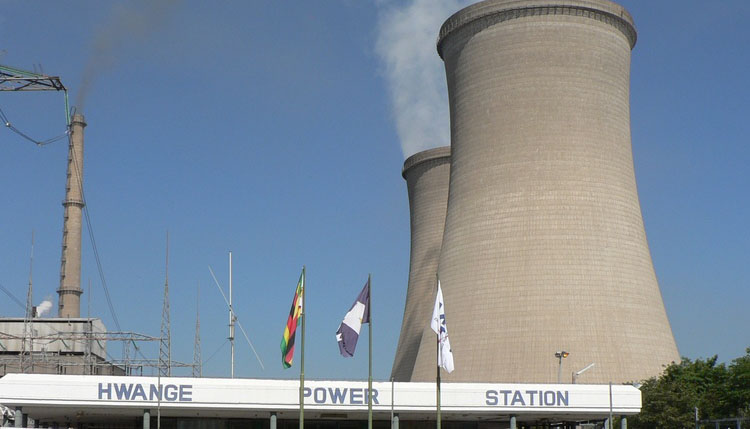
The Sunday Mail

Africa Moyo
Senior Business Reporter
STANBIC Bank Zimbabwe played a key role in facilitating the beginning of works at the Hwange Thermal Power Station expansion project after releasing US$55 million, which unlocked almost US$200 million from China Eximbank.
The expansion project, which is expected to result in a combined 600MW of electricity being generated from units 7 and 8, had a condition precedent that equity partners should contribute some funds to enable the release of funds by the financier.
Top sources at Zimbabwe Power Company (ZPC) told The Sunday Mail Business last week that the intervention by Stanbic and its parent company, Standard Bank of South Africa, was timely as it helped in ensuring that the project started early.
“When you are looking for funding for massive projects of the magnitude of HPS, financiers say, ‘look, we can’t give you all the money, provide some yourselves,” said a source.
“So we roped in Stanbic for what is called counterpart funding, whereby in simple terms, we were supposed to show our commitment to the project by providing some money.
“We are really grateful to Stanbic because on our own as ZPC, we can’t provide such funds. You might also want to recall that Stanbic assisted us with funding during the Kariba South project.”
The funds released by Stanbic have since been used to pay for development costs which include consultants fees due to the Environmental Management Agency.
ZESA Holdings spokesperson Mr Fullard Gwasira confirmed to The Sunday Mail Business last week that Stanbic had indeed, provided critical support towards the HPS projects.
“You are correct that it is Stanbic Bank Zimbabwe that provided counterpart funding,” said Mr Gwasira.
“In this particular case, counterpart funding is 15 percent. But they (Stanbic Zimbabwe) didn’t supply all of it; they supplied part and their parent company in South Africa also supplied part, and then the (China) Eximbank.
“The 15 percent counterpart funding stems from the fact that the China Eximbank provided 85 percent EPC (Engineering, Procurement and Construction) contract.”
Architecture of the project
The HPS expansion project, estimated to cost US$1,489 billion, is being financed through a combination of debt and equity.
The greater part of the funding is debt, with China Eximbank providing US$998 million, being 85 percent of the EPC cost, which is structured as a loan to Government.
Government would then on-lend to Hwange Electricity Supply Company (HESCO), a special purpose vehicle created for the expansion of HPS.
HESCO initially had ZPC as the sole shareholder but after engagements with the “senior debt provider”, China Eximbank, it was agreed that the EPC contractor, Sinohydro Corporation Limited, be a co-shareholder in HESCO.
The idea was to share the construction and operational risks of the project.
After the shareholder agreements, Sinohydro Mauritius, a subsidiary of Sinohydro, became a co-shareholder in HESCO and subsequently, an initial investment in the equity ratio of 64 percent, for ZPC, to 36 percent, was made to formalise the agreement.
Sinohydro is injecting US$176 million into the project as part of its equity portion.
ZPC, the power generation arm of ZESA, is investing US$315 million as equity into the project.
Sources said the US$55 million intervention by Stanbic Bank “helped unlock the China Eximbank loan as it was a condition precedent of China Eximbank that ZPC should have raised a significant part of their equity before financial closure was achieved”.
On financial closure, China Eximbank released US$200 million to the project.
The expansion project officially kicked off on August 1 last year.
Further drawdowns are expected to occur as construction progress takes place.
The loan repayments would be made from the proceeds of the electricity generated from the project, which is expected to be completed in 42 months.
The expansion project is one of the many initiatives that Government has undertaken to increase local power generation.
Increased internal power generation would help the country save up to US$12 million per month which is required in the importation of electricity from South Africa and Mozambique.
Cutting costs
Sources at ZPC say the decision to expanding HPS came after several feasibility studies were undertaken to establish the least cost options to boost internal electricity generation capacity.
It was found out that expanding HPS was the least cost alternative to increase base load capacity.
The expansion of the HPS will see the addition of two units, 7 and 8, with a capacity of 300MW each, and additional transmission infrastructure to enable evacuation of increased power from the expanded HPS.
The new expansion units will share some auxiliary infrastructure with the existing units such as the water supply, sewerage and ash disposal facilities.
On project completion, HPS will have a combined 1 520 MW capacity that will provide base-load power to the country.





